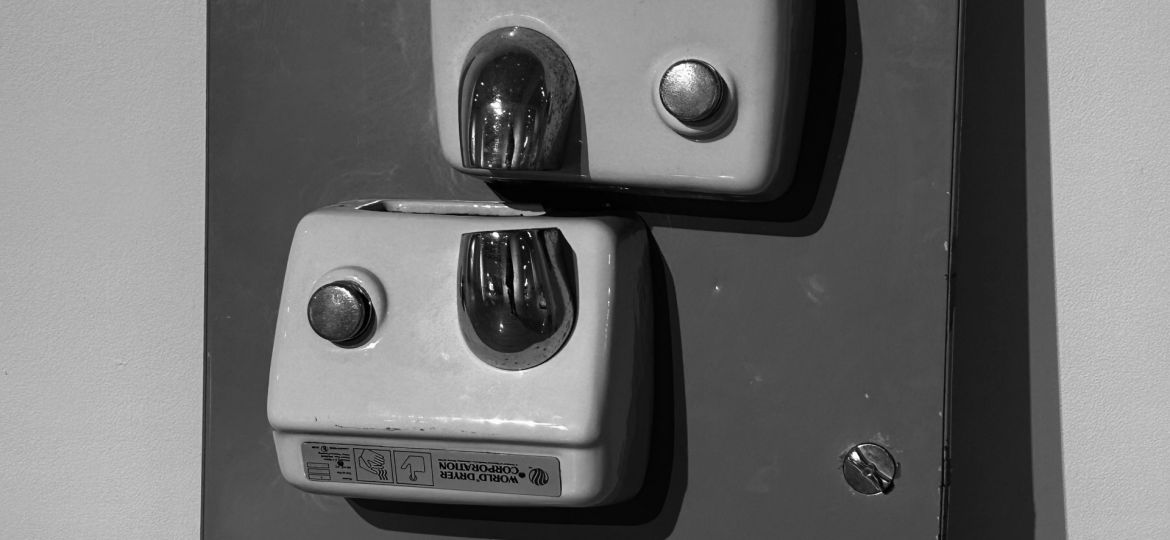
A gesture lives in a doubled state. It both commands and invites. It is oriented in both the present and future. Though many pieces left me gaping at the faculty art exhibit “Build on this Gesture,” my attention was immediately drawn to “Untitled: Hand Dryers.”
Krista Anderson-Larson created this piece as part of “Bath and Body Works.” The collection explores both the stigmas surrounding and the personal relationship with the sexual, especially for queer people.
“Untitled: Hand Dryers” features two peach-colored hand dryers. They are stacked and reversed vertically, their chunky boxes horizontally off-set as they face off. “World Dryer Corporation” is printed clearly along their tops. The silver metal sharply refracts light. Looking at where the sloping mouths of the dryers meet one another, you can imagine that the air blowing out is trapped and reciprocated. Anderson-Larson said, “Being so close that there is an exchange of air between two beings is a kind of closeness experienced with very few people throughout the course of one’s life.”
However, internal and external intimacy are neither easily accepted nor readily accessible. The symbolic hand dryers question the performance our bodies enact to wipe away the evidence of laborious cleaning itself. I thought of this as I dwelled on my experiences as a ballet dancer, prompted to smile onstage and hide the immense effort every fiber of my body was undertaking. This piece gets at a kind of similar restrictive propriety queer people specifically must hold. Anderson-Larson said, “Queer intimacy is rarely depicted and thus not normalized in the larger cannon—this sculpture pushes back against that.” Female sexuality is often taboo as well. Men are free to exchange sexual jokes or casually address masturbation while for a woman doing so is still seen as improper.
When I saw this piece, my mind snapped back to childhood memories. I heard the jet-engine sound; I saw myself with my mother in the Woodman’s bathroom.
In that sense, “Untitled: Hand Dryers” further represents the merging of memory and metamorphosis in the coming-of-age sexual adult as much as it represents the merging of private and public identity.
In both case, we have to rework our old narratives to find sexual sovereignty. We shouldn’t dry our hands of the past. Instead, Anderson-Larson calls us to acknowledge the ways our family systems imbued a certain conceptualization of touch, love, and pleasure.
The piece uses an everyday object to condemn and reclaim. The two hand dryers pass air back and forth forever between their bodies—the self-accepting sexual being refusing to let self-repressive sexual being push away its desires. More of a gesture than a command, “Untitled: Hand Dryers” invites us to hold conversation with ourselves as physical and emotional entities. Only then will we feel truly pure as we leave the stall and confront the world.

